Surf Beach (Calif. State Beach), and nearby San Onofre nuclear reactors
| 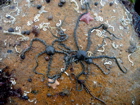
Ophionereis annulata
| 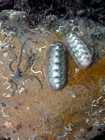
Stenoplax conspicua
|
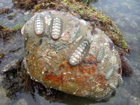
Image Caption
| 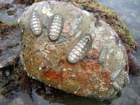
Image Caption
| 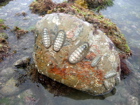
Image Caption
|
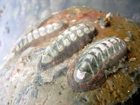
Image Caption
| 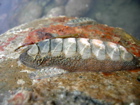
Image Caption
| 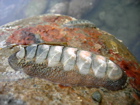
Image Caption
|
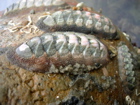
Image Caption
| 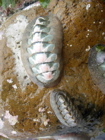
Image Caption
| 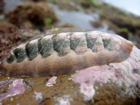
Image Caption
|
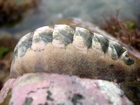
Image Caption
| 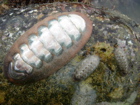
Image Caption
| 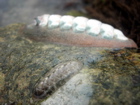
Image Caption
|
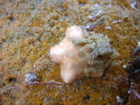
Patiria miniata with decapod
| 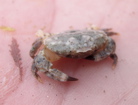
Lophopanopeus leucomanus
(knobkneed crestleg crab)
| 
Loxorhynchus grandis |
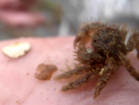
Loxorhynchus grandis
| 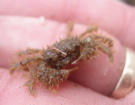
L. grandis (juvenile)
| 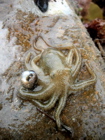
Octopus bimaculoides
(two-spotted octopus)
|

Navanax inermis
(sorcerer's nudibranch)
| 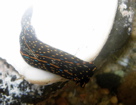
Navanax inermis
| 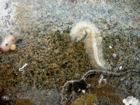
Enchiridium punctatum
|
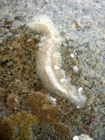
Enchiridium punctatum
| 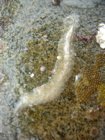
Enchiridium punctatum
| 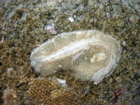
Enchiridium punctatum
|
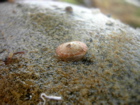
Megathura crenulata juvenile
| 
Juvenile M. crenulata are lower profile but otherwise look similar to Diodora arnoldi, which is also more common in the subtidal to about 25m depth, on the undersides of rocks
| 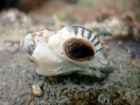
Image Caption
|
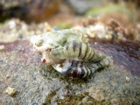
Image Caption
| 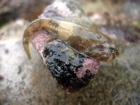
Northern clingfish
| 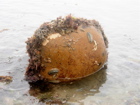
Image Caption
|
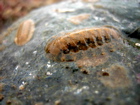
Lepidozona pectinulata
| 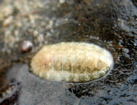
Lepidozona pectinulata
| 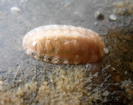
Lepidozona pectinulata
|
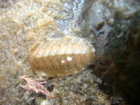
Lepidozona pectinulata
| 
Lepidozona pectinulata
| 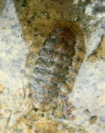
Lepidozona pectinulata
|
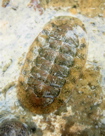
Lepidozona pectinulata
| 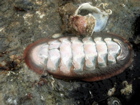
Stenoplax conspicua
| 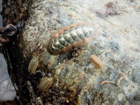
Image Caption
|
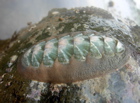
Image Caption
| 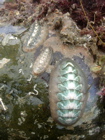
Image Caption
| 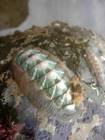
Image Caption
|
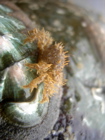
Image Caption
| 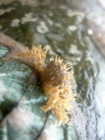
Image Caption
| 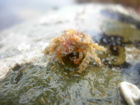
Image Caption
|
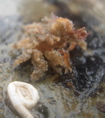
Pelia tumida
| 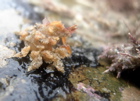
Pelia tumida
| 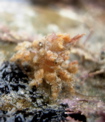
Pelia tumida
|
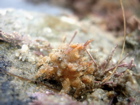
Pelia tumida
| 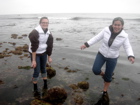
Image Caption
| 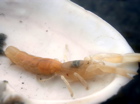
Tidepool ghost shrimp, Neotrypaea biffari (formerly Callianassa affinis)
|
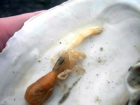
Tidepool ghost shrimps have permanent burrows among small cobbles on semi-protected intertidal reefs.
| 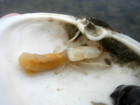
Tidepool ghost shrimps are very similar in appearance to the bay ghost shrimp (Neotrypaea californiensis), but the latter does not maintain permanent burrows and does not harbor the commensal blind goby in its burrows.
-- (see below)
| 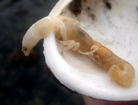
Image Caption
|
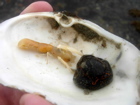
Image Caption
| 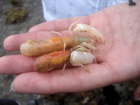
Image Caption
| 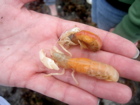
Image Caption
|
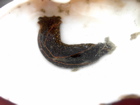
Navanax inermis
| 
Haminoea virescens is common at San Onofre (and thanks to Brenna Green for the ID!).
| 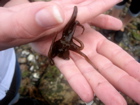
Octopus bimaculoides
(two-spotted octopus)
|
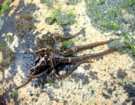
Octopus bimaculoides
| 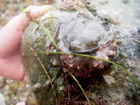
Octopus bimaculoides
| 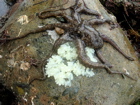
Two-spotted octopus with egg mass
|
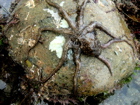
Octopus bimaculoides
| 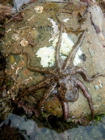
Octopus bimaculoides
| 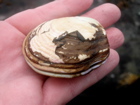
Semele decisa (clipped semele) |
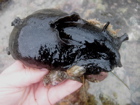
Aplysia vaccaria (black sea hare)
| 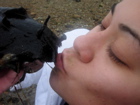
Love thy sea hares
| 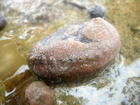
Haliotis fulgens (green abalone) |
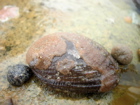
Haliotis fulgens
| 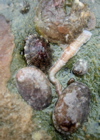
Image Caption
| 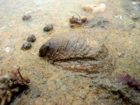
Crepidula onyx
|
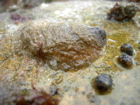
Crepidula onyx
| 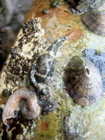
Northern clingfish, etc.
| 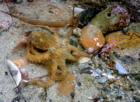
Octopus bimaculoides
|
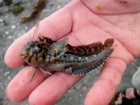
Onespot fringehead (Neoclinus uninotatus) - see cool videos of another local fringehead species here
| 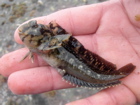
Onespot fringehead (Neoclinus uninotatus)
| 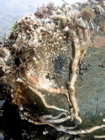
Very long green polychaete on vermetid snail (Serpulorbis) tubes
|
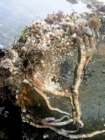
Image Caption
| 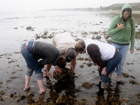
Image Caption
| 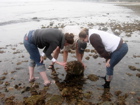
Image Caption
|
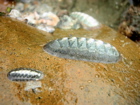
Stenoplax conspicua
| 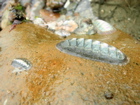
Image Caption
| 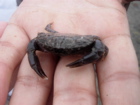
Lophopanopeus leucomanus
|

Image Caption
| 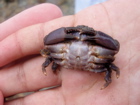
Image Caption
| 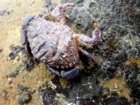
Image Caption
|
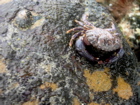
Image Caption
| 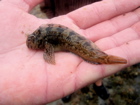
Onespot fringehead (Neoclinus uninotatus)
| 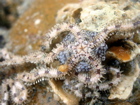
Underside of brittlestar
|
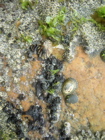
Image Caption
| 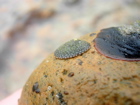
Lottia fenestrata
| 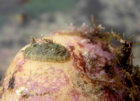
Mopalia cf. plumosa
|
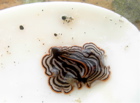
Polyclad flatworm (Prostheceraeus bellostriatus)
| 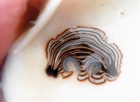
Image Caption
| 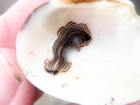
Image Caption
|
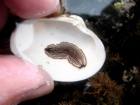
Image Caption
| 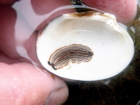
Image Caption
| 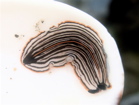
Image Caption
|
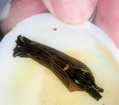
Predatory opisthobranch slug, Navanax inermis
| 
Navanax inermis is a predatory sea slug.
| 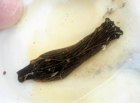
Navanax inermis - see cool movie of Navanax feeding here
|
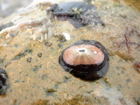
juvenile Megathura crenulata (giant keyhole limpet)
| 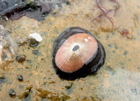
M. crenulata juvenile
| 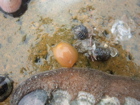
Image Caption
|
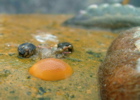
Image Caption
| 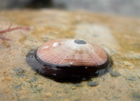
M. crenulata juvenile
| 
Tidepool ghost shrimp, Neotrypaea biffari (formerly Callianassa affinis)
|

Image Caption
| 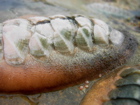
Image Caption
| 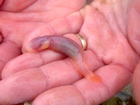
A mated pair of the California blind gobies (Typhlogobius californiensis) live in the burrow of a pair of tidepool ghost shrimps, Neotrypaea biffari (formerly Callianassa affinis).
|
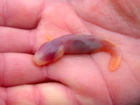
This blind goby was discovered and first studied in the 1800s, but was further studied by (our hero), Prof. G. E. MacGinitie (here: 1939; Amer. Midl. Nat. 22: 489-505)
| 
A Calif. blind goby remains paired with its mate throughout life, after first pairing within the first six months of its life. They depend totally on their host for maintenance of the burrow and for food.
| 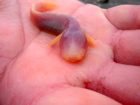
The California blind gobies live beneath the tidepool ghost shrimps in their burrow. Food that is rejected by the shrimp is often eaten by the fish. MacGinitie argued that the fish first lost its eyes after it became associated with these shrimps, however, this hypothesis might be contradicted if it has blind relatives (see next caption).
|
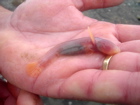
California blind gobies are one of only two blind gobies on this coast; the other is the halfblind goby, Lethops connectens, which lives subtidally associated with reefs or kelp holdfasts (central Calif. to Baja Calif.). -- See here. The arrow goby (Clevelandia ios) might also be found in tidepool ghost shrimp burrows but could be restricted to muddier areas.
| 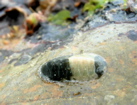
Lepidozona scrobiculata
| 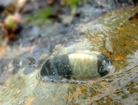
Lepidozona scrobiculata
|
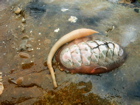
Stenoplax conspicua with unidentified sipunculan (peanut worm)
| 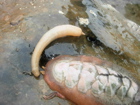
Image Caption
| 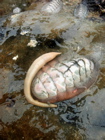
Image Caption
|
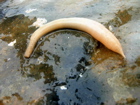
Image Caption
| 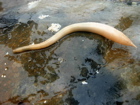
Image Caption
| 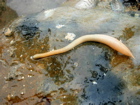
Image Caption
|
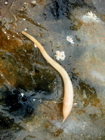
Image Caption
| 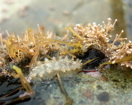
Acanthochitona avicularia
| 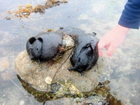
Three black sea hares from breeding aggregation of seven animals and their egg masses, temporarily moved out of water for photo
|
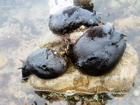
Image Caption
| 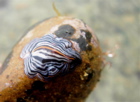
Polyclad flatworm
(Prostheceraeus bellostriatus)
| 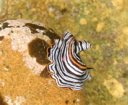
Polyclad flatworm
(Prostheceraeus bellostriatus)
|
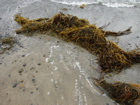
Image Caption
| 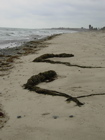
Image Caption
| 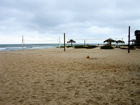
Image Caption
|
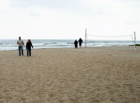
Image Caption
| 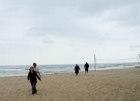
Image Caption
| 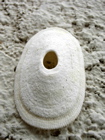
Megathura shell |
 Under Construction!
Under Construction! Under Construction!
Under Construction!